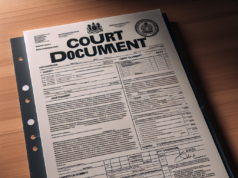
CONNECTICUT DIVORCE LAWS & REGULATIONS UPDATE 2023
A DECADE OF CHANGE: AN UPDATED OVERVIEW OF CONNECTICUT’S DIVORCE LAWS AND REGULATIONS TIMELINE (2013-2023)
Over the past decade, Connecticut’s divorce laws have undergone significant revisions, reflecting the state’s commitment to modernizing its legal framework while ensuring fairness, transparency, and the well-being of families navigating the challenging process of divorce. From property distribution to child custody, these changes underscore Connecticut’s dedication to adapting to changing societal dynamics. This article presents an overview of the key updates in Connecticut’s divorce laws and regulations from 2013 to 2023, presented in bullet points:
2013 – Introduction of No-Fault Divorce:
– Adoption of “no-fault” divorce, enabling couples to seek divorce without assigning blame or fault.
2014 – Child Custody and Visitation Enhancements:
– Implementation of child custody and visitation guidelines emphasizing the child’s best interests.
– Encouragement of shared parenting plans for optimal involvement of both parents.
2015 – Equitable Property Division Guidelines:
– Clarification of property distribution rules, ensuring equitable division of marital assets.
– Factors such as financial contributions, duration of marriage, and individual needs are considered.
2016 – Guidelines for Alimony Awards:
– Introduction of alimony guidelines to ensure consistency and transparency in spousal support awards.
– Factors like length of marriage, financial circumstances, and earning capacity are considered.
2017 – Embrace of Digital Documentation:
– Acceptance of digital documentation and electronic signatures in divorce proceedings, enhancing efficiency.
2018 – Emphasis on Comprehensive Parenting Plans:
– Implementation of detailed parenting plans outlining custody, visitation, and child support arrangements.
– Ensuring stability and nurturing for the child’s well-being.
2019 – Expedited Divorce Procedures:
– Implementation of measures to streamline the divorce process, reducing unnecessary delays.
2020 – Periodic Child Support Review:
– Regular review and adjustment of child support guidelines to reflect evolving economic realities.
2021 – Strengthening Domestic Violence Protections:
– Reinforcement of provisions protecting victims of domestic violence during divorce proceedings.
2022 – Online Filing and Resource Access:
– Introduction of online divorce filing options for improved accessibility and convenience.
– Enhancement of online resources to guide divorcing couples through the process.
2022 – Encouragement of Alternative Dispute Resolution:
– Promotion of mediation and collaborative approaches to reduce adversarial litigation.
2023 – Spousal Support Guidelines Update:
– Consideration of updates to spousal support guidelines for equitable and appropriate awards.
2023 – Special Considerations for Military Divorces:
– Introduction of measures addressing the unique aspects of military divorces, including deployment and benefits.
2023 – High-Asset Divorces and Complex Financial Matters:
– Exploration of tailored guidelines for high-asset divorces, addressing intricate financial arrangements.
Connecticut’s divorce laws have evolved over the past decade, reflecting the state’s commitment to modernizing its legal framework while prioritizing fairness and the well-being of all parties involved. These changes underscore Connecticut’s proactive approach to addressing the complexities of divorce in contemporary society. As the state continues to adapt its laws, it remains crucial for stakeholders, policymakers, and the public to engage in informed discussions that uphold the principles of justice and equity while supporting families during the divorce process.
Residency and Filing Needs
Divorce in Connecticut requires certain stipulations to be met before the petition can proceed, but one thing you do need to know is that if you are the filer of the petition, you would be known as the ‘Plaintiff.’ The other would be called the ‘Defendant.’ Remember that. Moving on….
Here are the requirements:
• Requirement 1: Either party must be a bona fide resident of the state of Connecticut for at least 12 months before filing for divorce or judgment of divorce.
• Requirement 2: At the time of entering into a marriage agreement, either party was a resident in the state at the time but then moved out of state only for a time before returning with the intention of permanently residing within the state before entering into a filing for divorce proceeding.
• Requirement 3: Either party would have to have moved in state before the cause for the dissolution of marriage occurred.
Reasons for Divorce in Connecticut
Before we get into reasons, know that divorce in Connecticut revolves around two categories:
• No-Fault Divorce
• Fault Divorce
“No-Fault” basically can mean two things –
1) Both Parties to the Marriage Keep Fighting or Arguing and Simply Don’t Want to Continue
2) Or Both Parties Have Been Living Separately Due to Incompatibility for at Least 18 Months Prior to Filing for Divorce
“Fault” divorce in Connecticut, however, is an entirely different situation.
Grounds for that divorce can include one or more of these as determined by a court of law:
• Adultery
• Fraudulent Contract
• Abandonment for at Least 1 Year
• Absence for 7 Years Without Any Communication
• Habitual Intemperance
• Intolerable Cruelty
• Life Imprisonment or Any Infamous Crime Sentenced for at Least a Year, Rendering Party Unable to Perform Conjugal Duties of the Marriage
• Confinement in Mental Institution for a Period of Five Years Within a Period of Six Years Preceding the Date of the Complaint for Divorce
The Definition of “Legal Separation” Versus “Divorce”
Sometimes, though, a husband and wife may not take the path of divorce, in which case opting for “legal separation” is a definite.
When a husband and wife separate, essentially all the characteristics of a divorce apply except for the fact that the marriage remains intact for any kind of reasons, like health insurance obtained through marriage, or the marriage tax return.
Typically, though, the main reason for a legal separation ultimately leads to a petition for divorce, as by law a couple can’t legally separate for financial reasons. There has to be some sort of division within the marriage for a legal separation to occur.
The Primary Documents For a Divorce in Connecticut
Ten or twenty documents may enter into the proceeding, not limited to these:
• Summons
• Notice of Automatic Court Orders
• Appearance
• Case Management Agreement
• Dissolution of Marriage Report
• Complaint for Dissolution of Marriage
• And Decree of Dissolution of Marriage
Divorce in Connecticut : Property Distribution
In regards to property distribution, the state follows what many in the legal field will call “equitable distribution.” Divorce in Connecticut favors this out of fairness for both parties in the sense that all assets are equally divided not by monetary value but by an equal physical share of property.
However, “equitable distribution” can only be enforced by the court when necessary, such as when both parties can’t actually come to their own mutual agreement about who gets what. The wife, in addition, may always be awarded her former or maiden name upon decree of dissolution.
Divorce in Connecticut : On the Subject of Spousal Support
Spousal support, or “alimony,” may only be a relevant aspect to discuss when it comes to divorce in Connecticut if the court – and evidence brought by either party or both parties – sees a need for it.
Dealing With Child Custody
There are four types of child custody:
• Joint Physical Custody
• Sole Physical Custody
• Joint Legal Custody
• Sole Legal Custody
“Joint Physical Custody” involves the sharing of physical responsibilities for the child(ren), such as clothing, food, transportation, etc. etc.. The Plaintiff and Defendant have equal custody pertaining to this issue. This includes the fact that the child(ren) will basically have two different addresses.
“Sole Physical Custody” revolves around that same definition except for the fact that instead of both parties having rights, one party retains those rights while the other attains what is stipulated as “Visitation Rights” for the child(ren).
“Joint Legal Custody” Legal custody differs from physical custody in the sense that while physical custody involves transportation, legal custody involves the choice of where the child(ren) can be transported – such as which doctor to have, what school the child(ren) can attend, etc. etc.. Essentially all the long-term major life decisions are shared between parents.
“Sole Legal Custody” Take that specific definition, except for the fact that not both parents have those legal responsibilities, but only one does. The parent without any legal custody has no right to the child(ren) at all, not even to the last name of the child(ren).
Divorce in Connecticut : How to Determine Child Support If Necessary
It’s customary knowledge that the non-custodial parent pays child support. In the state of Connecticut, the Income Shares Model is followed to determine that specific financial amount. Generally what is done is a combination of W2’s and other such worksheets to determine a fair amount without any use of percentages.
This isn’t to say, however, that both parties can’t come to some financial agreement in regards to child support. But if that’s not possible, the court can step in and utilize the standard Model.
Divorce in Connecticut : Other Requirements Upon Decree
No exceptions included, the Judicial Department also sets up a “Parenting Education Program” for both parties on the restructuring of families including, but not limited to, key information on the stages of development for children and how to help children cope with the adjustment of separation. In addition, dispute resolution, conflict management, visitation guidelines, how to reduce stress in children, and how to parent cooperatively are included in the program.


























